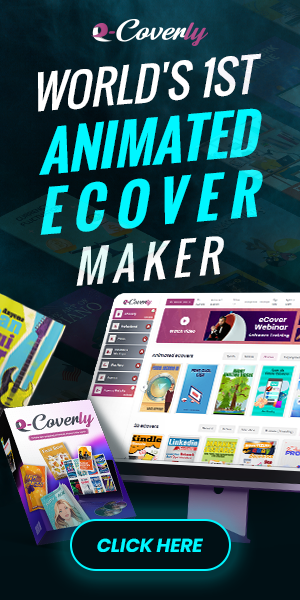Segmenting Your Email List For Improved Engagement And Conversion
The engagement and conversion rates of your campaigns may be considerably increased by segmenting your email list, which is a crucial component of email marketing. Your email list is segmented when you break it into smaller groups based on particular factors like demographics, geography, hobbies, and past purchases. This enables you to customize your emails to particular groups, increasing the likelihood that they will be opened and clicked on and eventually increasing conversion rates.
It's more crucial than ever to differentiate yourself from the competition and give your consumers a tailored experience in today's congested digital market. This can be accomplished easily and effectively by segmenting your email list, which may significantly improve the outcomes of your email marketing campaigns. In this post, we'll examine the advantages of segmenting your email list and offer illustrations of how to do it successfully.
Define what segmenting is
By separating your email list into more manageable groups according to specific criteria, you may segment your list. This enables you to develop tailored email messages that are better suited to each group's unique demands and interests. For instance, if you run an e-commerce firm, you may divide your email list into categories depending on past purchases, such as first-time purchasers, loyal consumers, and high-value clients. Alternatively, you may use location-based segmentation to break your list into groups according to the whereabouts of your consumers.
Your unique goals and target audience will determine the best way to segment your email list among the many various criteria available. To design tailored email messages that are more likely to be effective with each group, the secret is to find common traits or habits among your subscribers. You may provide your clients a more individualized and pertinent experience by segmenting your email list, which may increase engagement and conversion rates.
Discuss the benefits of segmenting
The engagement and conversion rates of your email marketing efforts may be increased by segmenting your email list, which offers a variety of advantages. Among the key advantages are:
Higher open and click-through rates: When you send targeted emails to certain audiences, the messages are more pertinent and tailored to their requirements and preferences. These emails thus have a better likelihood of being opened and clicked, which raises engagement rates.
Increased conversion rates: You increase your chances of reaching the appropriate audience with the right message at the right time by tailoring your emails to certain groups. Because consumers are more inclined to take action when an email appeals to their needs and interests, this may result in increased conversion rates.
Better client experiences: By segmenting your email list, you may provide your consumers a more tailored and pertinent experience. Customers may become more satisfied and loyal if they believe that you are meeting their wants and delivering useful information.
Efficiency gain: By segmenting your email list, you can design focused programs that are more likely to be effective and take less time and money to create and deliver. This will help your email marketing campaigns run more smoothly.
In general, segmenting your email list is a good approach to increasing client satisfaction, as well as the engagement and conversion rates of your email marketing campaigns.
Identify common criteria for segmentation
You may divide your email list into several categories using a variety of different criteria. Among the most typical are:
Demographics: This category contains elements like age, gender, income, degree of education, and occupation.
Location: You may divide your email list into groups according to the countries, regions, or cities where your subscribers are situated.
Interests: You may divide your subscriber list into several categories according to their product preferences or content types.
Purchase history: You may categorize your list of subscribers according to what they have previously purchased, such as first-time purchases, repeat consumers, or high-value clients.
Engagement level: You may divide your list into groups according to how frequently your subscribers open and click on your emails vs those who don't.
You may design customized email messages that are more relevant and tailored to the particular requirements and interests of each group by utilizing these and other factors.
Provide examples of how to segment your email list
You may segment your email list in a variety of ways to build customized email campaigns. Here are a few illustrations:
New customers: If you run an online store, you can create a category for new customers and send them emails with discounts or special offers to entice them to make a purchase.
Repeat customers: To entice them to make future purchases, you may build a section for them and send them emails with tailored suggestions or special offers.
Customers with high value: You may set up a category for high-value clients and send them emails with tailored offers or exclusive access to new items or events.
Location: You may build segments depending on where your subscribers are situated and send them emails with information about regional events or promotions if you have a physical store or items or services that are location-specific.
Interests: You may use segments to target subscribers with emails that contain offers or material that is relevant to their interests. For instance, if you own an online store selling clothes, you may divide your customer base into groups for items like dresses, shoes, and accessories and send each category specific emails.
You may design customized email messages that are more relevant and tailored to the particular requirements and interests of each group by utilizing these and other factors.
Discuss the tools and resources available for segmenting
You may segment your email list and build customized email campaigns using a variety of tools and resources. Among the most well-liked are:
Systems for email marketing: The majority of these platforms provide segmentation tools that let you build and maintain segments based on different criteria. Platforms for email marketing that are well-known include Systeme.io, GetResponse, AWeber, and Mailchimp.
Systems for managing and tracking customer relationships (CRM): CRM systems let you keep track of customer interactions and data, such as past purchases and interests. You may quickly segment your email list based on client data using the email marketing connections that are available for many CRM systems.
Google Analytics: Google Analytics is a free tool that you can use to measure and examine the traffic to your website and user activity. This tool allows you to divide your email list into several groups according to your region, device kind, and source of referrals.
Surveys and polls: You may segment your email list using the information you get from surveys and polls about your subscribers. To generate segments based on people's interests, you might, for instance, send out a survey asking them about their preferences and interests.
You can simply segment your email list and make targeted email campaigns that are more likely to be effective by utilizing these and other tools and resources.
In conclusion, segmenting your email list is a crucial component of email marketing that may greatly raise the campaign's interaction and conversion rates. You may develop targeted email campaigns that are more relevant and tailored to the needs and interests of each group by segmenting your email list into smaller groups depending on particular criteria. Greater open and click-through rates and ultimately higher conversion rates may result from this. If you haven't already started segmenting your email list, do so right away. Your clients will appreciate it!









